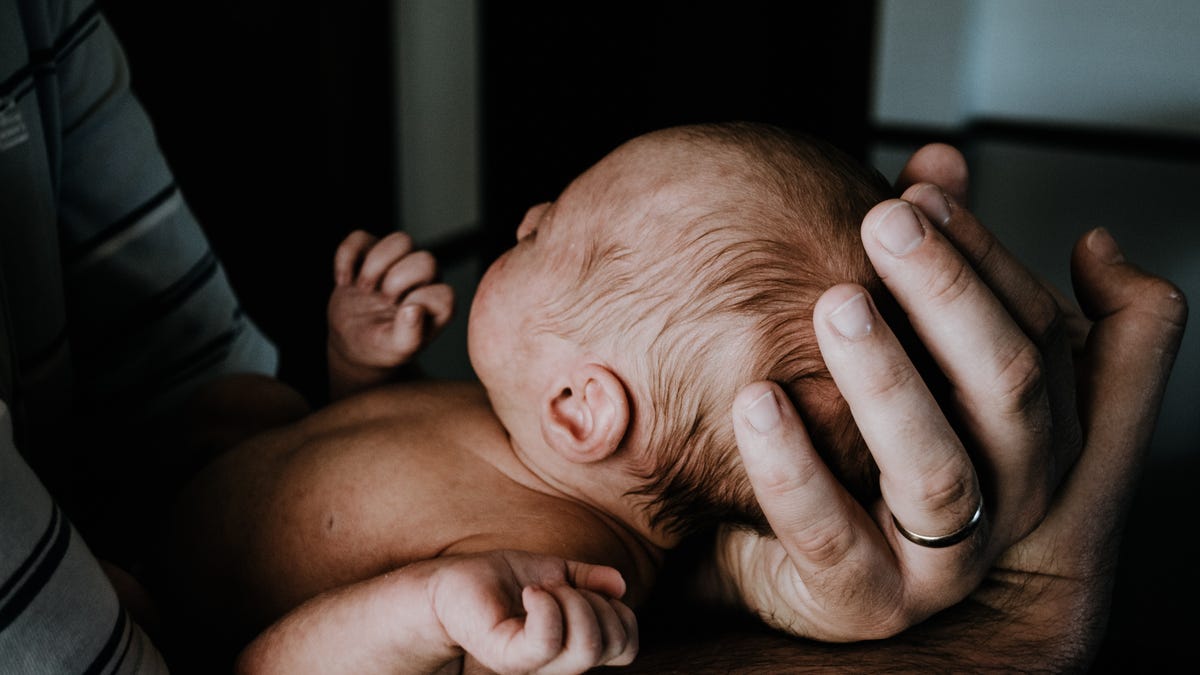When Mikael Cummings, a 25-year-old entrepreneur in Brooklyn, discovered he was going to become a father in March, he experienced a rush of excitement. However, after his daughter was born, those feelings were quickly replaced by fear, anxiety, and stress, which had a significant impact on his physical and mental well-being. It also affected his confidence and self-doubt in his work abilities. While sharing his struggles with his therapist, Cummings was surprised to learn that he might be suffering from postpartum depression (PPD)—a condition typically associated with mothers.
PPD, defined as a major depressive episode occurring after the birth of a child, is not limited to mothers. Recent studies have revealed that approximately 10 percent of men may experience PPD within the first year of their child’s birth, with the highest occurrence between 3 to 6 months postpartum. Dr. Sarah Allen, a clinical psychologist in Chicago, believes the number of men suffering from PPD might be even higher, but the condition is often underreported. “First, we recognized postpartum depression in women. Then we realized it wasn’t just depression, but also anxiety, OCD, and other conditions affecting them. Now, we are acknowledging that dads can have it too,” she explains.
As many as 1 in 6 men experience high levels of anxiety during the postpartum period, highlighting the need to address this issue. Despite the fact that research on PPD in fathers has only gained attention in recent years, clinical psychologist Dr. Katie Morel from New York City has witnessed the increased risk of depression and anxiety in fathers during her 26 years of practice. She believes that as more research and information become available, we can effectively address this issue.
While workplaces have started focusing on mental health, particularly work-life balance, therapy, and paid sick days, family leave is equally crucial. Open conversations about PPD at work often revolve around mothers, but it’s important to remember that all parents are susceptible.
Dr. Morel explains, “Men are often overlooked when it comes to PPD because most literature revolves around the hormonal triggers in women. However, there are other factors – applicable to men as well – that contribute to PPD. These factors include feeling overwhelmed or detached, a history of depression or anxiety, lack of sleep, and absorbing some of their partner’s depression.”
The symptoms of PPD in men may differ from those in women, but there are still similarities. Dr. Allen notes that men often experience frustration, irritability, and even anger. Additionally, men may exhibit physical symptoms such as fatigue, insomnia, lack of energy, and changes in appetite. On the other hand, women are more likely to display emotional symptoms such as crying and feelings of sadness.
Cummings experienced significant physical and emotional changes during the first months of becoming a father. He describes feeling physically sick, losing motivation, and struggling with confidence. To mask his emotions, he kept reminding himself that his partner had just given birth and that his experience couldn’t compare. However, these symptoms can affect a new father’s performance once they return to work, leading to difficulties meeting deadlines, becoming easily agitated with coworkers, or lacking motivation.
Dr. Allen believes that proactive screening of new fathers can help identify PPD symptoms early on. A 2020 article in the Journal of the American Academy of Pediatrics suggested that pediatricians should screen both mothers and fathers for perinatal depression during check-up visits. This approach fills a crucial gap since men often go undiagnosed when PPD screenings are solely the responsibility of obstetricians.
Equitable family leave also plays a significant role in addressing PPD. Paid paternity leave allows fathers suffering from PPD to have sufficient time to adjust to their new life. Morel explains, “Some symptoms of depression directly impact work quality and quantity. A lack of motivation, decreased interest in activities, negative thoughts about oneself, and sleep disturbances would all make it difficult for fathers to function at work.” Providing resources like screenings and paid paternity leave can help reduce the risks of depression and anxiety in both parents during the postpartum period.
In conclusion, it is crucial to acknowledge that PPD is not limited to mothers. Men can also experience this condition and may require support and resources. By raising awareness, having open conversations, and implementing proactive measures like screenings and equitable family leave, we can address the silent crisis of postpartum depression in fathers.
Denial of responsibility! Vigour Times is an automatic aggregator of Global media. In each content, the hyperlink to the primary source is specified. All trademarks belong to their rightful owners, and all materials to their authors. For any complaint, please reach us at – [email protected]. We will take necessary action within 24 hours.


